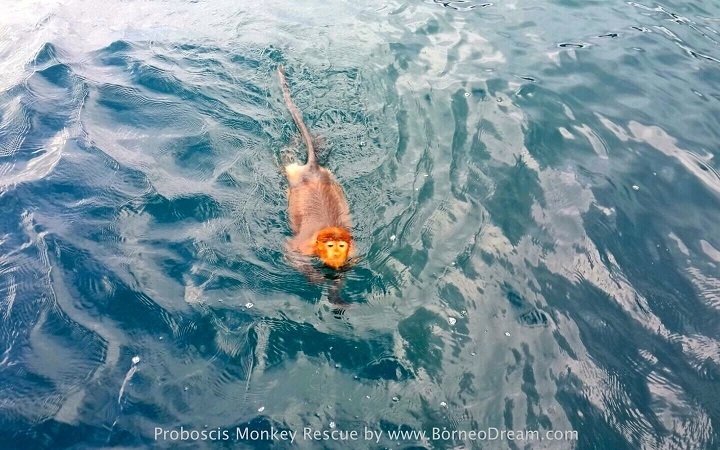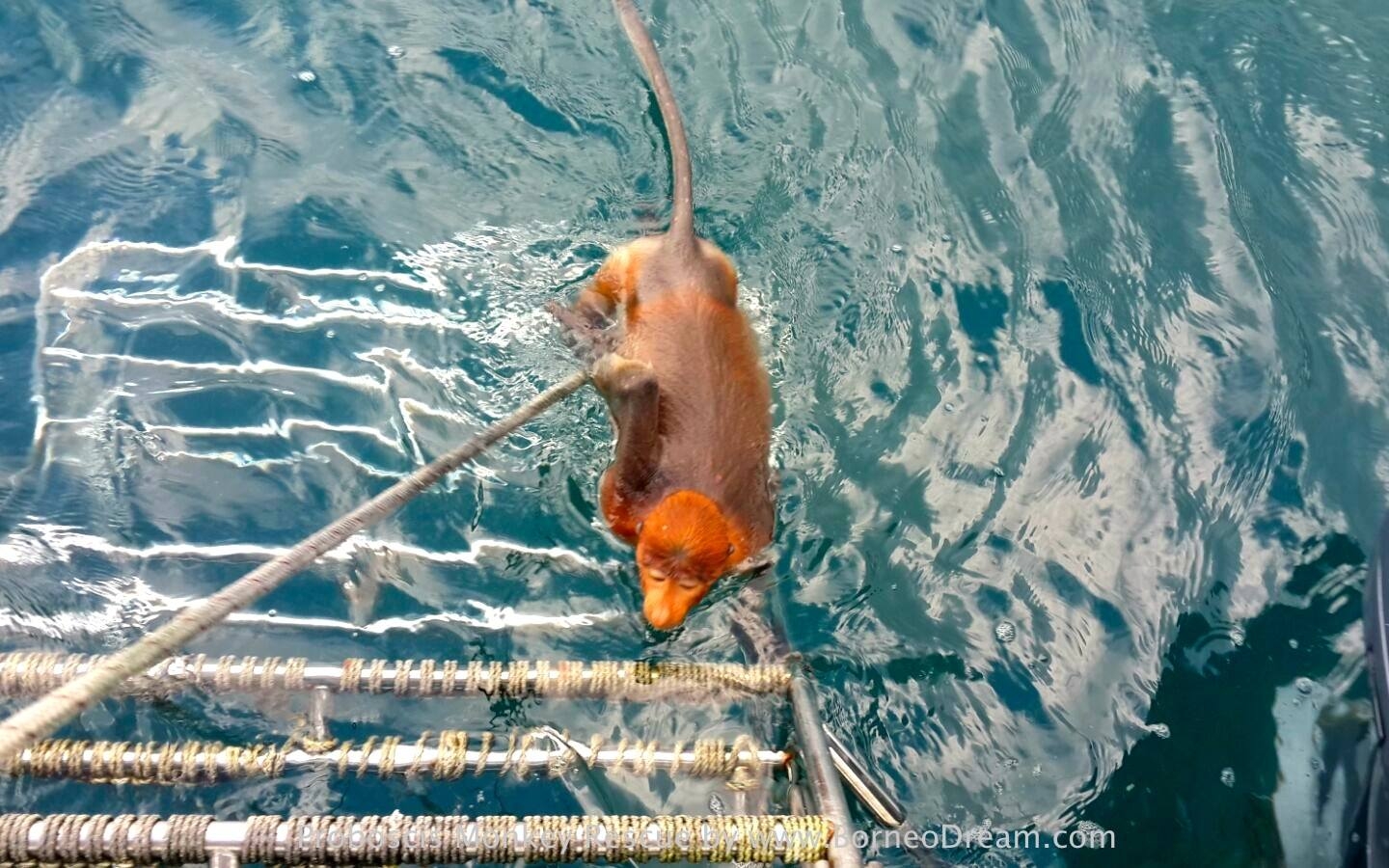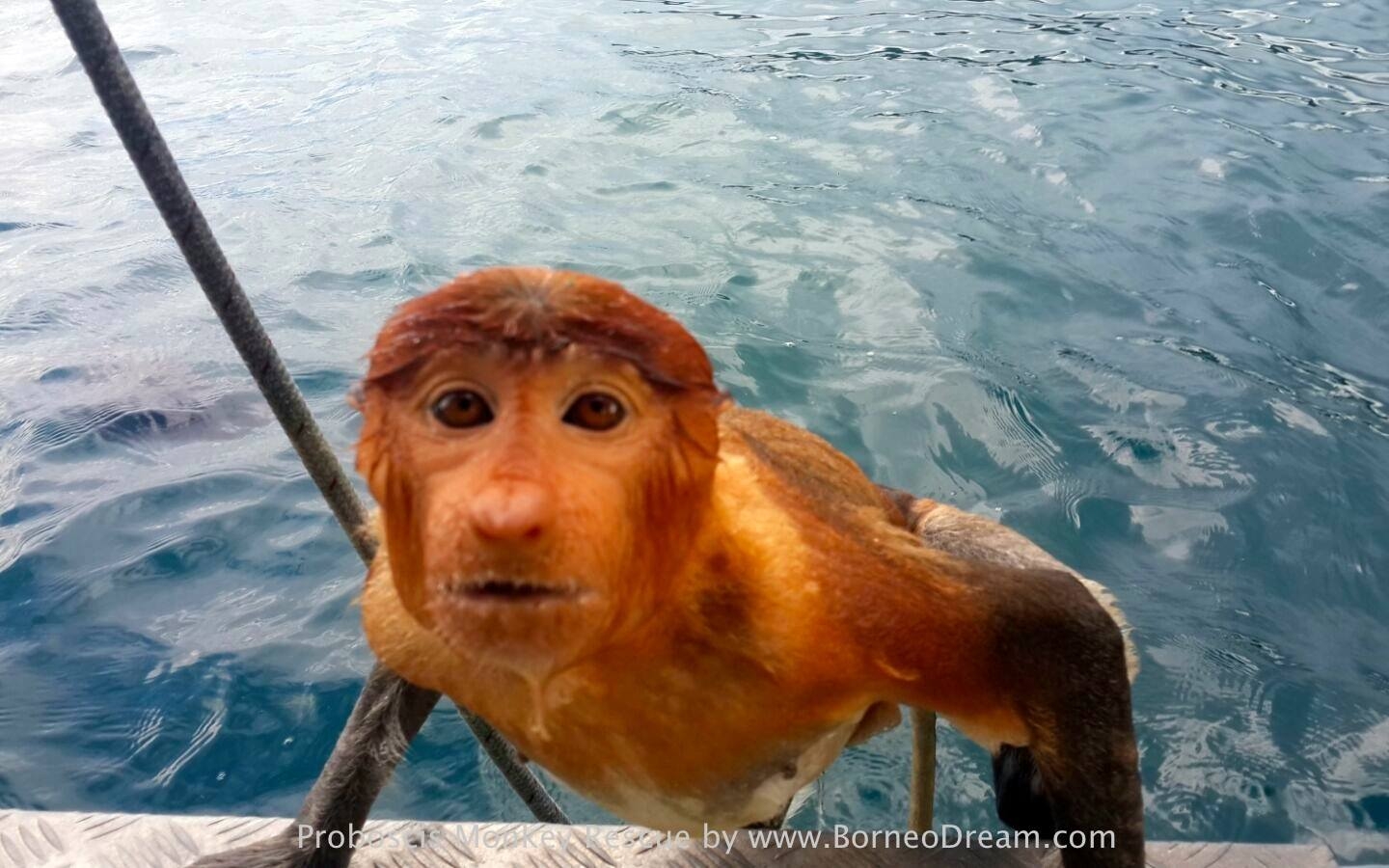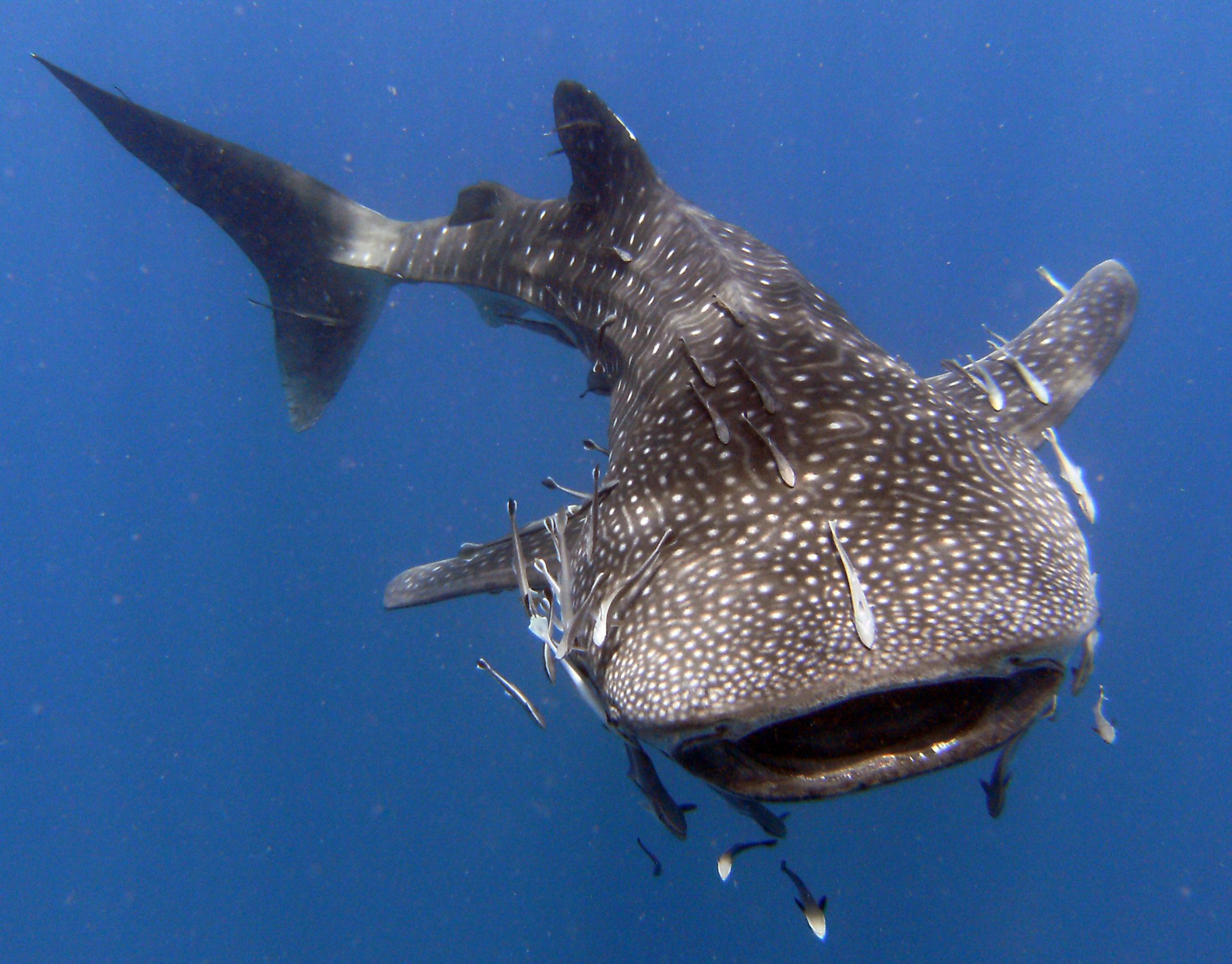[PHOTOS] This Rescue Mission Of A Proboscis Monkey At Pulau Gaya Is Just Too Cute
Look at that face!
Earlier in November, a young and adorable looking Proboscis monkey was rescued at sea about 100 metres off Pulau Gaya...
The rescue was done by the Gaya Island Resort's dive operator team while they were returning from an afternoon dive and snorkelling session. Gaya Island, or Pulau Gaya is just 10 minutes off Kota Kinabalu, Sabah and forms part of the Tunku Abdul Rahman National Park.
The boat skipper inched slowly towards the Proboscis monkey, lowered down a ladder and the tired monkey quickly climbed on board to safety.
However, after climbing to safety, the monkey leapt back into the sea. Later, Gaya Island Resort's resident naturalists and resident marine biologist coax it out of the water.
As soon as he reached the resort, he climbed up a coconut tree and settled among the leaves for an hour before deciding to rejoin the wild Proboscis monkeys, an endangered species, residing in the Gaya Island jungle
According to NatGeo, proboscis monkeys are the primate world’s most prolific swimmers, frequently leaping from tree limbs and hitting the water with a comical belly flop. They have evolved webbed feet and hands to help them outpace the crocodiles that are some of their main predators.
This marks the second Proboscis monkey sea rescue handled by the Gaya Island Resort team. The elusive and striking primate is found only in Borneo and the males are identifiable by its large, pendulous nose that earns him his name, Nasalis larvatus.
An impressive male Proboscis Monkey (Nasalis larvatus) showing off his massive nose.
Image via YTL HotelsMeanwhile, prior to the Proboscis monkey's rescue, a lucky couple at Gaya Island Resort not only had a close-up encounter with a whale shark but also lived to talk about it
The massive yet gentle Whale Shark is at least the length of a bus and weighs around 19 tonnes.
Image via YTL HotelsThey came close to it during their dive when this 9-metre long beast came alongside them for some 20 minutes before swimming off to deeper waters...
Although massive, whale sharks are docile. They prefer warm waters and populate all tropical seas. If lucky, they sometimes allow swimmers to hitch a ride.
While they are generally spotted between January and March on their migratory journey off the shores of Gaya Island, this rare encounter must have been quite a memorable sighting for the lucky guests.
As the largest fish in the sea, whale sharks have an enormous menu from which to choose. Fortunately for most sea-dwellers their favourite meal is plankton. They scoop these tiny plants and animals up, along with any small fish that happen to be around, with their colossal gaping mouths while swimming close to the water's surface.







